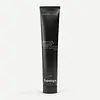What's inside
What's inside
 Key Ingredients
Key Ingredients

 Benefits
Benefits

 Concerns
Concerns

 Ingredients Side-by-side
Ingredients Side-by-side

Water
Skin ConditioningPropanediol Dicaprylate
EmollientDiethylamino Hydroxybenzoyl Hexyl Benzoate
UV FilterMyristyl Myristate
EmollientEthylhexyl Triazone
UV AbsorberTitanium Dioxide
Cosmetic ColorantBis-Ethylhexyloxyphenol Methoxyphenyl Triazine
Skin ConditioningOryza Sativa Starch
AbsorbentPolyglyceryl-6 Stearate
EmollientBehenyl Alcohol
EmollientPhenylbenzimidazole Sulfonic Acid
UV AbsorberDiisostearoyl Polyglyceryl-3 Dimer Dilinoleate
EmollientCaprylic/Capric Triglyceride
Masking1,2-Heptanediol
Skin ConditioningPropanediol
SolventSodium Stearoyl Glutamate
CleansingHydrolyzed Hyaluronic Acid
HumectantAloe Barbadensis Leaf Juice Powder
Skin ConditioningLimonium Narbonense Flower/Leaf/Stem Extract
AntioxidantAlumina
AbrasiveSodium Hydroxide
BufferingStearic Acid
CleansingPolyglyceryl-6 Behenate
Emulsion StabilisingGlycerin
HumectantSodium Gluconate
Skin ConditioningAcacia Senegal Gum
MaskingXanthan Gum
EmulsifyingO-Cymen-5-Ol
AntimicrobialCitric Acid
BufferingWater, Propanediol Dicaprylate, Diethylamino Hydroxybenzoyl Hexyl Benzoate, Myristyl Myristate, Ethylhexyl Triazone, Titanium Dioxide, Bis-Ethylhexyloxyphenol Methoxyphenyl Triazine, Oryza Sativa Starch, Polyglyceryl-6 Stearate, Behenyl Alcohol, Phenylbenzimidazole Sulfonic Acid, Diisostearoyl Polyglyceryl-3 Dimer Dilinoleate, Caprylic/Capric Triglyceride, 1,2-Heptanediol, Propanediol, Sodium Stearoyl Glutamate, Hydrolyzed Hyaluronic Acid, Aloe Barbadensis Leaf Juice Powder, Limonium Narbonense Flower/Leaf/Stem Extract, Alumina, Sodium Hydroxide, Stearic Acid, Polyglyceryl-6 Behenate, Glycerin, Sodium Gluconate, Acacia Senegal Gum, Xanthan Gum, O-Cymen-5-Ol, Citric Acid
Water
Skin ConditioningHomosalate
Skin ConditioningOctocrylene
UV AbsorberDibutyl Adipate
EmollientButyl Methoxydibenzoylmethane
UV AbsorberEthylhexyl Triazone
UV AbsorberButylene Glycol
HumectantC12-15 Alkyl Benzoate
AntimicrobialMethylene Bis-Benzotriazolyl Tetramethylbutylphenol
UV FilterSilica
AbrasivePolyglyceryl-3 Methylglucose Distearate
EmulsifyingTapioca Starch
Bis-Ethylhexyloxyphenol Methoxyphenyl Triazine
Skin ConditioningGlyceryl Stearate
EmollientPhenoxyethanol
PreservativePotassium Cetyl Phosphate
EmulsifyingAcrylates Copolymer
Decyl Glucoside
CleansingCaprylyl Glycol
Emollient1,2-Hexanediol
Skin ConditioningTriethanolamine
BufferingHydroxyacetophenone
AntioxidantPolymethylsilsesquioxane
Disodium EDTA
Tocopheryl Acetate
AntioxidantDecylene Glycol
Skin ConditioningPropylene Glycol
HumectantXanthan Gum
EmulsifyingSodium Carrageenan
Emulsion StabilisingSodium Chloride
MaskingWater, Homosalate, Octocrylene, Dibutyl Adipate, Butyl Methoxydibenzoylmethane, Ethylhexyl Triazone, Butylene Glycol, C12-15 Alkyl Benzoate, Methylene Bis-Benzotriazolyl Tetramethylbutylphenol, Silica, Polyglyceryl-3 Methylglucose Distearate, Tapioca Starch, Bis-Ethylhexyloxyphenol Methoxyphenyl Triazine, Glyceryl Stearate, Phenoxyethanol, Potassium Cetyl Phosphate, Acrylates Copolymer, Decyl Glucoside, Caprylyl Glycol, 1,2-Hexanediol, Triethanolamine, Hydroxyacetophenone, Polymethylsilsesquioxane, Disodium EDTA, Tocopheryl Acetate, Decylene Glycol, Propylene Glycol, Xanthan Gum, Sodium Carrageenan, Sodium Chloride
 Reviews
Reviews

Ingredients Explained
These ingredients are found in both products.
Ingredients higher up in an ingredient list are typically present in a larger amount.
You might know this ingredient as Tinosorb S or Bemotrizinol. It is a UV filter that covers both UVA and UVB rays.
This ingredient has two peak UV absorption peaks ( 310 and 340 nm) and is able to absorb both UV-A and UV-B rays. This ingredient works by preventing UV rays from reaching and damaging your skin.
On top of that - it is highly photostable and helps prevent the photodegration of other sunscreen ingredients such as avobenzone.
Tinosorb S is allowed in the EU, Australia, and Asia. It is close to being approved by the FDA and we'll hopefully get this ingredient in the U.S. by late 2025.
Fun fact: Tinosorb S is the most effective UV absorber at maximum concentration (measured by SPF) permitted in the EU.
This ingredient is oil-soluble, so your oil-cleansers will take this right off at night.
Learn more about Bis-Ethylhexyloxyphenol Methoxyphenyl TriazineEthylhexyl Triazone is a modern chemical sunscreen that protects from UV-B radiation.
It is the most effective of existing UV-B filters, as it provides the highest level of photo-stable absorption. It protects from the entire UV-B range (280 to 320nm), with it's highest level of protection at 314nm.
Ethylhexyl Triazone is oil soluble, oderless and colorless, which mean it is able to be incorporated into a variety of different formulations.
It is not currently available within the United States due to slow changing FDA regulations. Outside of the US, it is used in formulations at concentrations up to 5%.
Learn more about Ethylhexyl TriazoneWater. It's the most common cosmetic ingredient of all. You'll usually see it at the top of ingredient lists, meaning that it makes up the largest part of the product.
So why is it so popular? Water most often acts as a solvent - this means that it helps dissolve other ingredients into the formulation.
You'll also recognize water as that liquid we all need to stay alive. If you see this, drink a glass of water. Stay hydrated!
Learn more about WaterXanthan gum is used as a stabilizer and thickener within cosmetic products. It helps give products a sticky, thick feeling - preventing them from being too runny.
On the technical side of things, xanthan gum is a polysaccharide - a combination consisting of multiple sugar molecules bonded together.
Xanthan gum is a pretty common and great ingredient. It is a natural, non-toxic, non-irritating ingredient that is also commonly used in food products.
Learn more about Xanthan Gum